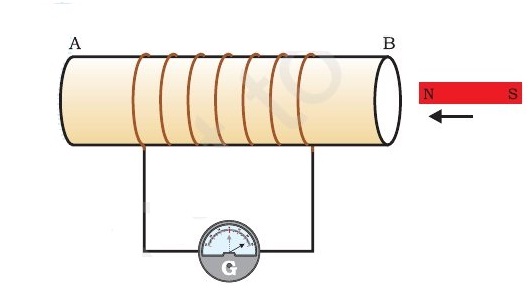





Published on Apr 02, 2024
Electromagnetic or magnetic induction is the production of an electromotive force (i.e., voltage) across an electrical conductor in a changing magnetic field.
Michael Faraday is generally credited with the discovery of induction in 1831, and James Clerk Maxwell mathematically described it as Faraday's law of induction. Lenz's law describes the direction of the induced field. Faraday's law was later generalized to become the Maxwell–Faraday equation, one of the four Maxwell equations in his theory of electromagnetism.
Electromagnetic induction has found many applications, including electrical components such as inductors and transformers, and devices such as electric motors and generators.
To Study The Phenomenon Of Electromagnetic Induction.
Electricity and magnetism were considered separate and unrelated phenomena for a long time. In the early decades of the nineteenth century, experiments on electric current by Oersted, Ampere and a few others established the fact that electricity and magnetism are inter-related. They found that moving electric charges produce magnetic fields. For example, an electric current deflects a magnetic compass needle placed in its vicinity. This naturally raises the questions like: Is the converse effect possible? Can moving magnets produce electric currents? Does the nature permit such a relation between electricity and magnetism? The answer is resounding yes! The experiments of Michael Faraday in England and Joseph Henry in USA, conducted around 1830, demonstrated conclusively that electric currents were induced in closed coils when subjected to changing magnetic fields. In this chapter, we will study the phenomena associated with changing magnetic fields and understand the underlying principles. The phenomenon in which electric current is generated by varying magnetic fields is appropriately called electromagnetic induction.
When Faraday first made public his discovery that relative motion between a bar magnet and a wire loop produced a small current in the latter, he was asked, “What is the use of it?” His reply was: “What is the use of a new born baby?” The phenomenon of electromagnetic induction is not merely of theoretical or academic interest but also of practical utility. Imagine a world where there is no electricity – no electric lights, no trains, no telephones and no personal computers. The pioneering experiments of Faraday and Henry have led directly to the development of modern day generators and transformers. Today’s civilisation owes its progress to a great extent to the discovery of electromagnetic induction.
The phenomenon of electromagnetic induction is the existence of an induced current in a circuit (such as a coil) placed in a region where the magnetic field motion changes with the time. The magnetic field may change due to relative motion between coil and magnet placed near the coil as shown in the Fig. 1. We know that a current-carrying conductor also produces magnetic field that changes with a change in the current flowing through it. Thus if a coil is placed near to a current-carring conductor, an induced current in the coil may setup due to a change in the current through the current-carrying conductor.
Fig. 1: Moving a magnet towards a coil sets up a current in the coil circuit, as indicated by deflection in the galvanometer needle.

Magnetic bar, a galvanometer, coil and connecting wires.
1. Take a coil of wire having a large number of turns.
2. Connect the end of the coil to a galvanometer.
3. Take a strong bar magnet and move its north pole into the coil and observe the changes in the galvanometer needle.
4. Repeat earlier step with the south pole of the bar magnet.
5. Now repeat the procedure with the coil having a different number of turns and the variation in the deflection of the galvanometer needle.
1. When we move the magnet in or out of the coil, the needle of galvanometer gets deflected in different directions.
2. When we insert the north pole (N) of bar magnet into the coil, the needle gets deflected in negative direction.
3. When we insert the south pole (S) of bar magnet into the coil, the needle gets deflected in positive direction.
4. When we move the bar magnet in or out of the coil with varying speed, the speed of deflection changes accordingly.
5. As we increase the number of turns in the coil, the deflection increases.
1. The deflection of galvanometer needle indicates the presence of current in the coil.
2. The direction of deflection gives the direction of flow of current.
3. The speed of deflection gives the rate at which the current is induced.
4. The deflection in galvanometer changes with the change in number of turns in the coil - more the number of turns in the coil greater is the deflection.
1. http://www.electronics-tutorials.ws/electromagnetism/electromagnetic-induction.html
2. https://www.youtube.com/watch?v=tC6E9J925pY
3. http://www.ncert.nic.in/ncerts/l/leph106.pdf